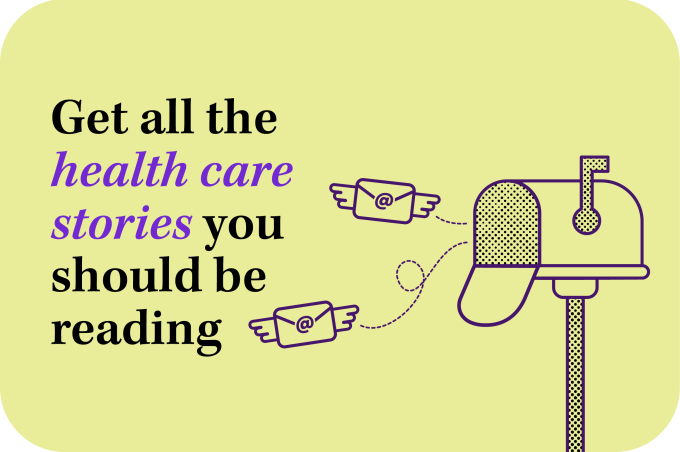Physicians have a wealth of untapped ideas about how to transform the future of medicine, but the process of applying for a grant—beginning with the letter of intent that is often required—can be intimidating.
Experts such as Kimberly Lomis, MD, the AMA's vice president of undergraduate medical innovations, say that potential grant applicants should look past any hesitation and let the power of their ideas carry the day.
The letter of intent, she said, is “really a way for people to toss out their ideas and maybe come up with things that would surprise the funder. ... And then from that body of letters, those stimulating ideas are the ones that are then invited to put in the work and effort to do the full submission. It's a nice compromise because it's a low barrier of entry.”
One key AMA grant-application process begins soon. As part of its ChangeMedEd® initiative, the AMA has launched the Transforming Lifelong Learning Through Precision Education Grant Program, a $12 million investment that will award at least $1.1 million to each of 10 projects at either single or partnering U.S.-based institutions. Each grant will be disbursed over four years.
The grant application period opens March 18, with letters of intent due April 21. Selected applicants will then be invited to send in full proposals and grant recipients will be announced in late 2025.
Precision education seeks to personalize medical learning throughout a physician's career, making it more efficient, equitable and effective. The AMA is championing precision education, which was inspired by precision medicine, through ChangeMedEd®. Precision education focuses on tailored assessments and approaches and uses data and technology to drive the change in medical education.
Dr. Lomis said that novices in grant proposals should not be thrown off or discouraged by lack of experience. Often, funders are on the lookout for novel ideas coming from unexpected sources. And simply throwing your hat in the ring can bring its own benefits.
“From the get-go, applying for it [a grant]—whether it be the AMA ChangeMedEd grant or the $1,000 grant given by your institution—going through that process is really valuable,” said Kelly J. Caverzagie, MD. He is an internist and chair-elect of the AMA Council on Medical Education.
Whether you’re applying for the AMA’s grant or for another, Drs. Lomis and Caverzagie provided five key tips for crafting a letter of intent that will get noticed and give your proposal its best chance at moving on.
Set aside enough time
Though projects vary and it’s impossible to say exactly how much time you will need to invest in crafting a letter of intent for a grant application, there are some general guidelines.
First, Dr. Lomis said, she and other reviewers can quickly tell when a letter of intent was a rush job.
“As soon as you hear about the opportunity—even if the official application platform is not open yet—that's when you need to start exploring locally the relationships you would need in place in order to put the letter together,” she said.
Dr. Caverzagie said work on a letter of intent should ideally begin weeks before the final product is submitted. It’s a good idea to get your initial ideas on paper, then ruminate a bit, discuss with colleagues and return to revise the letter.
“Realistically, this is going to take hours and days of work to have a competitive application for a large grant,” he said.
It’s important to have enough lead time to reach out to the other team members participating in the program. They will need time to check their schedules and give feedback on the proposal too.
Research the grant and funder
Your homework starts before you sit down to write the letter of intent. Look into who is funding the grant—what are their goals? What kinds of projects have they previously approved? The grant itself will provide important keys to fashioning your letter. Look for key words, Dr. Lomis said, suggesting you pay close attention to the portion of the instructions that say the agency will be “particularly interested in submissions that” do X, Y or Z.
If there’s one essential to writing a successful letter of intent, it’s ensuring your project is the right one for the grant. There’s no fitting a square peg into a round hole here.
“Too many times, individuals write grants around an idea that they have, hoping that the granting agency will understand it when the granting agency is wanting something in a different direction,” Dr. Caverzagie said.
That’s not to say that ideas can’t be reframed, he said. In fact, you may be able to find a way to adjust your project for a new grant if your letter makes it clear how you will meet the stated goals.
Dr. Caverzagie also suggests finding out the current state of research on the topic. How will your project fit in? How would it be different from other projects? Differentiating yourself will be helpful.
Leverage your resources
Even if you’ve never gotten or even applied for a grant, it’s likely that you have resources you can bring to bear as you write your letter of intent.
Dr. Lomis suggested attending any informational sessions available about the grant and looking around for colleagues or mentors who can review your letter or give advice. “We as physicians, in particular, tend to not think so much out of our discipline. So, if you're a physician working in a health center, somebody there has grants,” she said.
The AMA is hosting a webinar April 1, 2:30 p.m. CDT, to offer more details about the Transforming Lifelong Learning Through Precision Education Grant Program. Learn more and register now.
Tailor your letter
Once you start writing, Dr. Caverzagie said, keep in mind a rough guideline for length. A good rule of thumb is to give roughly three paragraphs of response to each of the request-for-proposal’s narrative questions, though longer or shorter answers may sometimes be appropriate. The first paragraph should outline the vision, the second how you would achieve the goal and the third how you intend to measure outcomes and demonstrate success.
“You want to make sure that it's long enough to be robust and to show true intent,” he said, but “you don't want it to be overwhelming and have every question be five to six pages long, because the reviewer will eventually just stop reading. So there is a happy medium.”
Dr. Lomis said using key words and phrases from the grant application information can be useful—to a point.
“Sometimes people try to force and use language that doesn't align with the project that they're doing. They try to push that, and that doesn't land well with the reviewers of the letters,” she said. “But where it fits, mirroring the language referring to the goals and how your project would relate to those goals is a really important part of this.”
Remember the benefits of the process
Dr. Lomis said even those with no experience with grants or letters of intent should consider offering up their good ideas.
“Just give it a whirl,” Dr. Lomis said. “You really get better at it once you start to do it, and you might not get advanced with your first couple tries, but you have to keep trying and you'll get more and more comfortable with it.”
She said it may even help develop a business case for local resources.
“You've taken the time to really think about it, articulate the vision and the project and what it would take,” Dr. Lomis said. “We have had folks say that just the process of writing it sometimes gels your thoughts, helping you pursue something locally that you wouldn't have made a good case for without that structure.”




